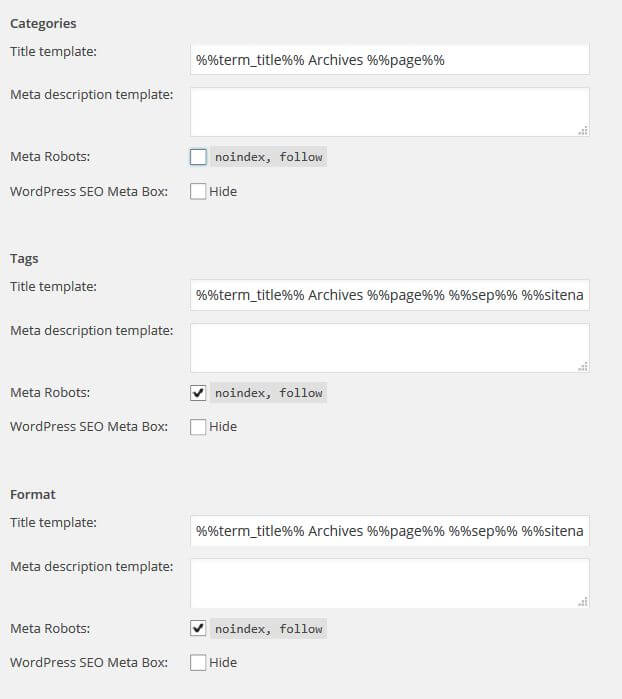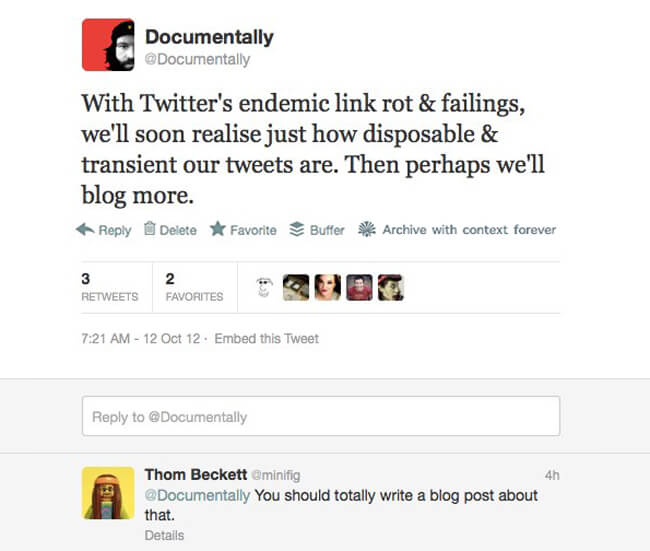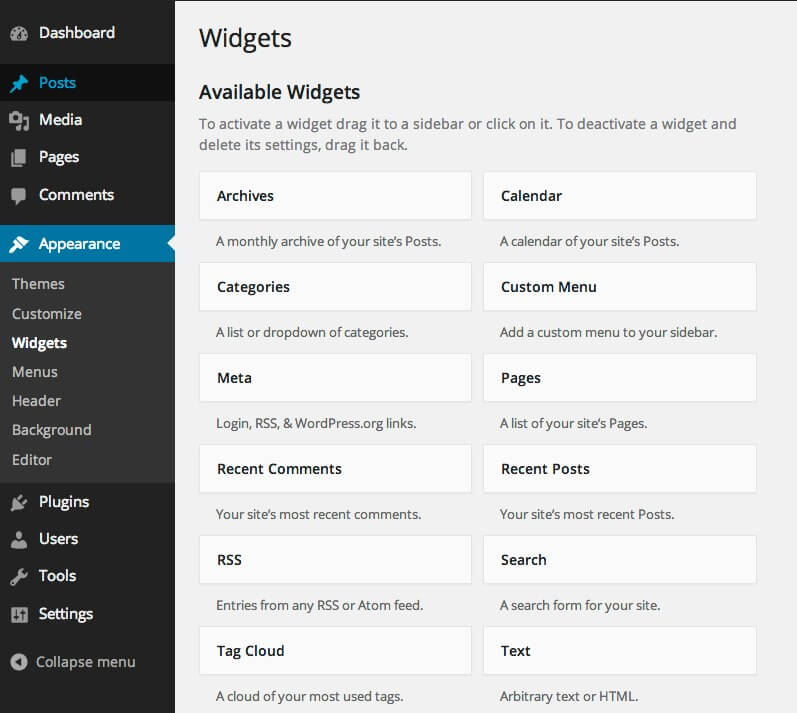How to Fix WordPress for SEO, Part 2 of 2
Contents
There’s little to get around the fact that WordPress is a duplicate content factory. You write an article, select 4 tags for the article, click submit and oops, you just created 8 pages of duplicate content. Your article gets featured on the homepage, typically with an automatically created snippet which is the first paragraph of your article. The category features the same paragraph, as well as all 4 newly-created tag pages, and yet again on your archives page. Lastly, your article itself features that paragraph.
How to Minimize Duplicate Content
You can put band-aids this problem. All-in-one SEO pack will give you the opportunity to deindex your tag pages, archives and category pages. You can fill out the excerpt on your post creation page so that the homepage shows different content than the article itself. What is the best practice on how to deal with all of this? My personal recommendation is as follows:

- Don’t use tags or archives. If you already are using them, follow the next point below.
- Install All-in-one SEO pack, or Yoast, and noindex/follow tag pages and archives.
- Index your categories. This will create some duplicate content between your homepage and your category page.
- CategoryTinymce so you can have a WYSIWYG editor for your category description.
- Enter comprehensive, full descriptions in your category section, so they will show up in your template. Make this a very long 1000+ word article.
- On your submit post page, fully enter the excerpt description so that a different paragraph is shown on your homepage and category page, that is distinct from your article.
Why do I do it this way?
Your categories get site-wide links on every single post of your website. Deindexing them is a complete shame. They contain a bulk of the PR and link juice flowing around your website, and to not even index them is in effect wasting all of that link equity. Furthermore, categories tend to rank extremely well for the keyword that represents the category. While all of the articles on your site may be chasing after long-tails, your categories have an opportunity to rank for the main keywords. By placing a large article above the duplicate-content excerpts, you give your category an opportunity to rank, even though it has some duplicate content on the page.
Tags are just a ridiculous waste of space on your website. They create a page of duplicate content for every tag. Tag clouds are aweful, they take a bucket full of non-contextual uses of keywords and dump them (sometimes hundreds of them) on every page. Matt Cutts has this to say about tags, and tag clouds:
Can tag clouds be overdone? Yes, they can! Certainly if you have like 500 tags in your tag cloud, that can look a little bit like keyword stuffing. Especially because its completely arbitrary words all just sort of jumbled together.
If you over-do it, for example with keyword stuffing, then maybe we don’t trust those links as much, or it could impact the ranking of your page. If it’s a matter of a small number of tags, it probably won’t hurt your ranking.
So if you’d rather have pagerank flow throughout your site, you might want to have your page rank flowing to your individual blog posts, rather than things tagged.
He goes on to further say he doesn’t use tags himself. He says users don’t notice them or use them that heavily. Finally, he reiterates that (paraphrased) you’re wasting your pagerank on your tag pages rather than flowing it through your actual articles. I couldn’t agree with Matt more on this topic. There are times when Matt Cutts will obfuscate issues when you’re trying to figure out exactly how Google’s algorithm works, yet it’s impossible not to notice his disdain of tags and his case against using them makes complete sense.
Worthless Widgets and Template Items
I’m about to explain things I think you should remove from your blog. Before I continue, I’d like to say this —if it isn’t broke, don’t fix it. Again, just to make the point clear … if you have a profitable blog, don’t start rocking the boat by mixing up your template items. Changing a profitable website’s template around is plain silly, if it’s making good money just leave it alone. Even if it’s doing everything wrong, even if the keyword density is messed up, even if it’s using all the widgets I’m about to tell you that are worthless, if it’s making good money, just leave it as it is.

Why? Because there are other elements at play when it comes to on-page SEO. If you have an aged tag page, that has existed for the last 5 years — pages accrue credibility with age. It probably has pagerank tied up in it, and the link juice it passes along may have gotten considerably large over the years. There is another factor called link rot. If your pages have links pointing to them, and those links disappear, this is known as link rot, and it is a negative ranking factor.
Now, if your website is already not making money, cleaning up your tag pages is of no consequence, and in the long run it will greatly help your individual articles to rank. However, suddenly removing dozens or hundreds of pages from your website will cause a massive shock of link rot throughout your website. So, if it is a profitable website that is making good money, just leave it alone. Work instead on building links.
How To Deal With Them?
Let’s talk about worthless widgets. There are a number that are available to stick on your side panel. One is the fancy looking calendar, also the archives listing by month, things such as “recent posts” and “recent comments” widgets. Everything I listed, don’t use them.

- Recent Comments. This will typically show notices about the latest 5 comments on your website, along with a link to the page. This is worthless because it injects an extra 5 post titles into each page of your blog. Those posts may or may not be relevant. Keeping your internal linking relevant is positive for your on-page SEO, whereas interlinking between your least relevant posts is detrimental. This will also cause wild fluctuations of link rot to the page, as new comments are made and pages no longer link to the page that had the comment.
- Recent Posts. Again, just because a post was done recently, doesn’t make it a relevant internal link. Lets assume your blog has 100 posts. That one post on your blog instantly receives 100 internal links sends an overwhelming surge of over-optimizing link juice to the page. These links will disappear after you make 5 more posts, thereby creating a massive amount of link rot to that page. In practice, you will notice that the post immediately ranks well (because it has so much link juice flowing through it), and then pops out of the SERPs completely (because of the massive amount of links to the page that no longer exist, once it is no longer a “recent post”). This will cause a huge “Google dance”, where its rankings will wildly fluctuate in the SERPs, and will only settle down after weeks of recovering from the link rot.
- Monthly Archives. Lets all agree that, simply because you wrote a post 3 months ago, as opposed to 4 months ago, speaks absolutely nothing about the relevancy of a post. Someone clicking an archives link is, in essence, saying “I really don’t care what I read. Just show me anything and I’ll read it. Hmm, something you wrote 3 months ago will work.” Compare this to a category, where someone will actively say “Yes, I want to read more articles about this particular topic.” Categories convey relevancy. Archives don’t. They are not worth the weight of all the duplicate content they create, as the snippets shown on archives pages are the same shown on your homepage or your category pages. You should remove all archives (whether it is the calendar, or the month by month listing) from your sidebar.
- Tag Clouds. Above, I’ve explained why you shouldn’t be using tags. Obviously then, you will want to remove any tag cloud widget in your sidebar!
- Breadcrumbs. I’ve been hard on the breadcrumb, but it’s actually useful. Breadcrumbs will inject the title into your template, as well as once again injecting the category into your template. This is ok, as long as you are using a proper strategy for naming your titles and categories in the first place. The key is to not keyword stuff your categories, and dilute your title — perhaps chopping your keyword up into different areas of the title, or using related terms and synonyms.
- Comments section. Most comment sections will inject the title yet again above the comments, “6 people have commented on Detroit Real Estate.” This isn’t good, and is completely unnecessary. I typically will hack my template and remove the title, leaving “6 people have commented”. If you feel confident in editing your template, I suggest you do this. Otherwise, just be aware that it will happen, and create longer articles with less keywords to compensate.
The problems with WordPress can be worked around, depending on how you use it. It is incredibly easy to keyword stuff in your template, and hopefully the previous two pages will help you balance your template so that excess keyword injection is minimal.
Our next page is about on-page SEO theory, how to interlink between your pages properly and relevancy.

Comments